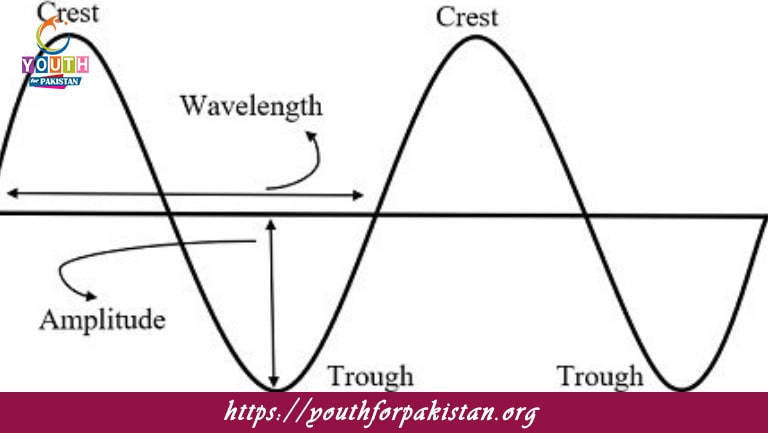Longitudinal Periodic Waves MDCAT MCQs with Answers

Welcome to the Longitudinal Periodic Waves MDCAT MCQs with Answers. In this post, we have shared Longitudinal Periodic Waves Multiple Choice Questions and Answers for PMC MDCAT 2024. Each question in MDCAT Physics offers a chance to enhance your knowledge regarding Longitudinal Periodic Waves MCQs in this MDCAT Online Test.
Longitudinal Periodic Waves MDCAT MCQs Test Preparations
Longitudinal waves are characterized by:
a) Vibrations perpendicular to the direction of wave propagation
b) Vibrations parallel to the direction of wave propagation
c) Absence of any medium
d) Only transverse motion
In a longitudinal wave, the regions where particles are closest together are called:
a) Crests
b) Troughs
c) Compressions
d) Rarefactions
The regions in a longitudinal wave where particles are farthest apart are known as:
a) Compressions
b) Rarefactions
c) Crests
d) Nodes
The distance between two consecutive compressions in a longitudinal wave is called:
a) Wavelength
b) Amplitude
c) Frequency
d) Period
The speed of a longitudinal wave is determined by:
a) The wavelength and frequency of the wave
b) The amplitude and wavelength of the wave
c) The frequency and amplitude of the wave
d) The medium through which it travels
Longitudinal waves can travel through:
a) Solids only
b) Liquids only
c) Gases only
d) Solids, liquids, and gases
The formula for the speed of a longitudinal wave is:
a)
=
×
v=λ×f
b)
=
v=
T
λ
c)
=
v=
λ
f
d)
=
×
v=λ×T
=
×
v=λ×f
The term ‘periodic’ in longitudinal waves refers to:
a) The repetition of compressions and rarefactions
b) The constant amplitude of the wave
c) The uniform speed of the wave
d) The absence of a medium
The frequency of a longitudinal wave is:
a) The number of compressions per second
b) The number of rarefactions per second
c) The number of complete cycles passing a point per second
d) The speed of the wave divided by the wavelength
The amplitude of a longitudinal wave is measured as:
a) The distance between two consecutive rarefactions
b) The distance between two consecutive compressions
c) The maximum displacement of particles from their equilibrium position
d) The distance between the wave’s crest and trough
In a longitudinal wave traveling through air, the air particles move:
a) In circular paths
b) Back and forth in the direction of wave propagation
c) Perpendicular to the direction of wave propagation
d) Randomly in all directions
A longitudinal wave with a wavelength of 2 meters and a frequency of 5 Hz has a speed of:
a) 10 m/s
b) 7.5 m/s
c) 2.5 m/s
d) 5 m/s
The primary characteristic of a longitudinal wave is:
a) It has crests and troughs
b) It consists of compressions and rarefactions
c) It travels faster in water than in air
d) It cannot be transmitted through gases
The speed of a longitudinal wave in a medium is influenced by:
a) The temperature of the medium
b) The pressure of the medium
c) The density of the medium
d) All of the above
Longitudinal waves are commonly observed in:
a) Sound waves
b) Light waves
c) Radio waves
d) Water waves
In a longitudinal wave, the distance between two consecutive rarefactions is equal to:
a) Wavelength
b) Amplitude
c) Frequency
d) Period
The time taken for one complete cycle of a longitudinal wave is called its:
a) Frequency
b) Wavelength
c) Amplitude
d) Period
The pressure changes in a longitudinal wave are greatest at:
a) Compressions
b) Rarefactions
c) The equilibrium position
d) The wave’s crest
In which medium do longitudinal waves travel fastest?
a) Solid
b) Liquid
c) Gas
d) Plasma
The distance between two consecutive compressions in a longitudinal wave is called:
a) Amplitude
b) Frequency
c) Wavelength
d) Period
Longitudinal waves differ from transverse waves in that:
a) They travel faster in solids
b) They involve particle motion parallel to the wave direction
c) They have no wavelength
d) They travel slower in liquids
If the wavelength of a longitudinal wave increases, the frequency:
a) Increases
b) Decreases
c) Remains the same
d) Becomes unpredictable
The relationship between the speed, wavelength, and frequency of a longitudinal wave is given by:
a)
=
×
v=λ×f
b)
=
v=
f
λ
c)
=
÷
v=λ÷f
d)
=
v=
λ
f
=
×
v=λ×f
The amplitude of a longitudinal wave affects:
a) The speed of the wave
b) The frequency of the wave
c) The intensity of the wave
d) The wavelength of the wave
In a longitudinal wave, if the frequency is doubled, the speed:
a) Doubles
b) Remains constant
c) Halves
d) Is quadrupled
A longitudinal wave is represented by:
a) A graph of displacement versus time
b) A graph of pressure versus position
c) A graph of wavelength versus frequency
d) A graph of amplitude versus wavelength
The maximum pressure change in a longitudinal wave occurs at:
a) Rarefactions
b) Compressions
c) The midpoint between compressions and rarefactions
d) The crest of the wave
The speed of sound in air is an example of:
a) A longitudinal wave
b) A transverse wave
c) An electromagnetic wave
d) A surface wave
Longitudinal waves can be represented in a diagram by:
a) A series of vertical lines
b) A series of horizontal lines
c) Alternating zones of compression and rarefaction
d) Circular wavefronts
The frequency of a longitudinal wave is measured in:
a) Hertz
b) Meters
c) Seconds
d) Pascals
The speed of a longitudinal wave in a medium is primarily determined by:
a) The medium’s temperature
b) The medium’s density
c) The medium’s elasticity
d) Both b and c
In a sound wave, the particles in the air:
a) Vibrate in the direction of the wave propagation
b) Move in circular paths
c) Do not move at all
d) Vibrate perpendicular to the wave propagation
The speed of sound in air is approximately 343 m/s at:
a) 10°C
b) 15°C
c) 20°C
d) 25°C
The energy carried by a longitudinal wave is related to its:
a) Frequency
b) Amplitude
c) Wavelength
d) Speed
The frequency of a longitudinal wave is inversely proportional to its:
a) Speed
b) Wavelength
c) Amplitude
d) Energy
In a longitudinal wave, a complete cycle consists of:
a) One compression and one rarefaction
b) One crest and one trough
c) Two compressions and two rarefactions
d) Two crests and two troughs
The speed of longitudinal waves in a solid is typically:
a) Faster than in a liquid
b) Slower than in a liquid
c) The same as in a liquid
d) Unaffected by the state of matter
The wavelength of a longitudinal wave can be measured from:
a) One compression to the next compression
b) One rarefaction to the next rarefaction
c) Either of the above
d) None of the above
The speed of a longitudinal wave is highest in:
a) Air
b) Water
c) Iron
d) Wood
The phenomenon where two longitudinal waves combine to form a resultant wave is known as:
a) Diffraction
b) Interference
c) Refraction
d) Reflection
If you are interested to enhance your knowledge regarding Physics, Chemistry, Computer, and Biology please click on the link of each category, you will be redirected to dedicated website for each category.




